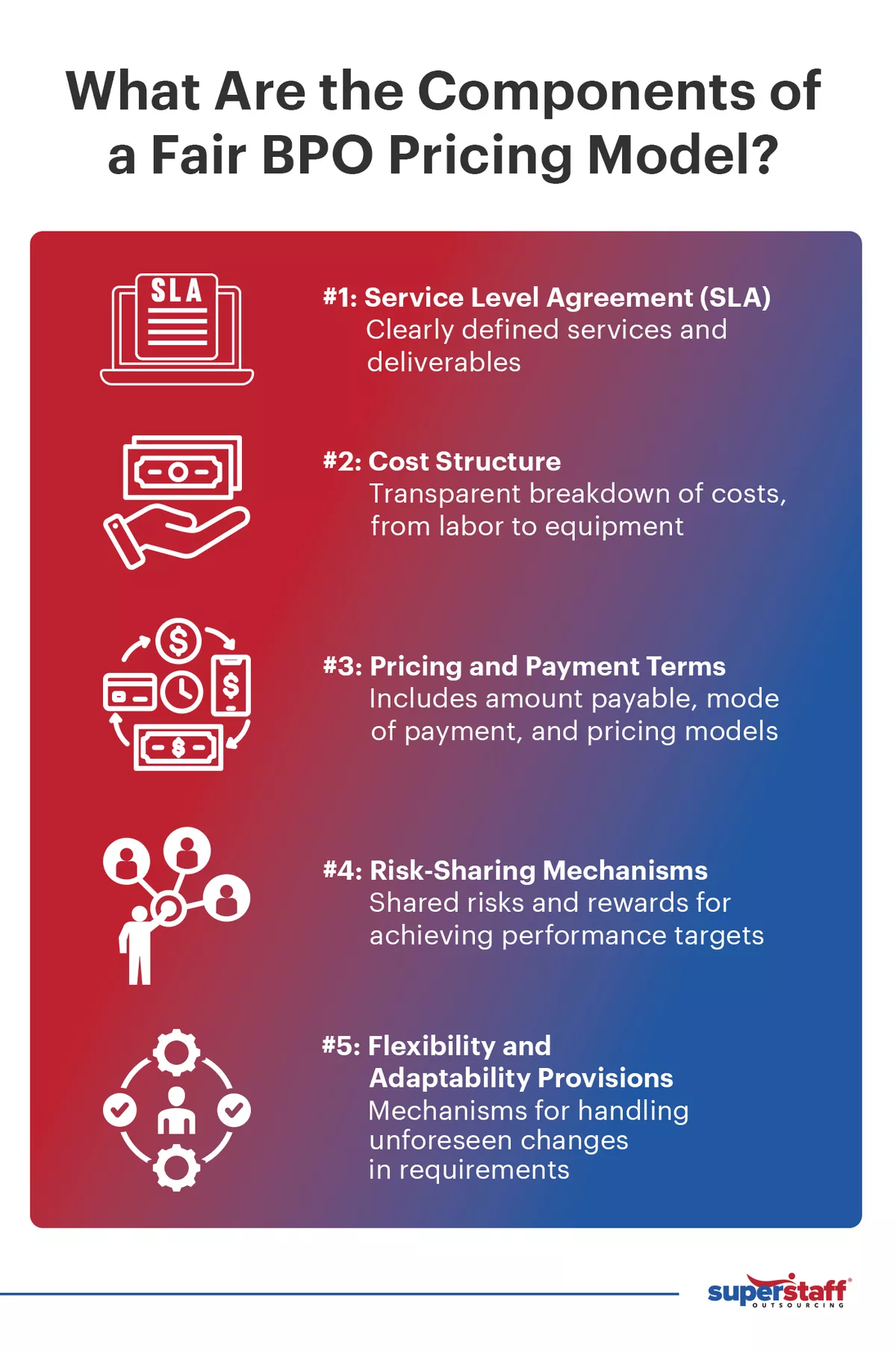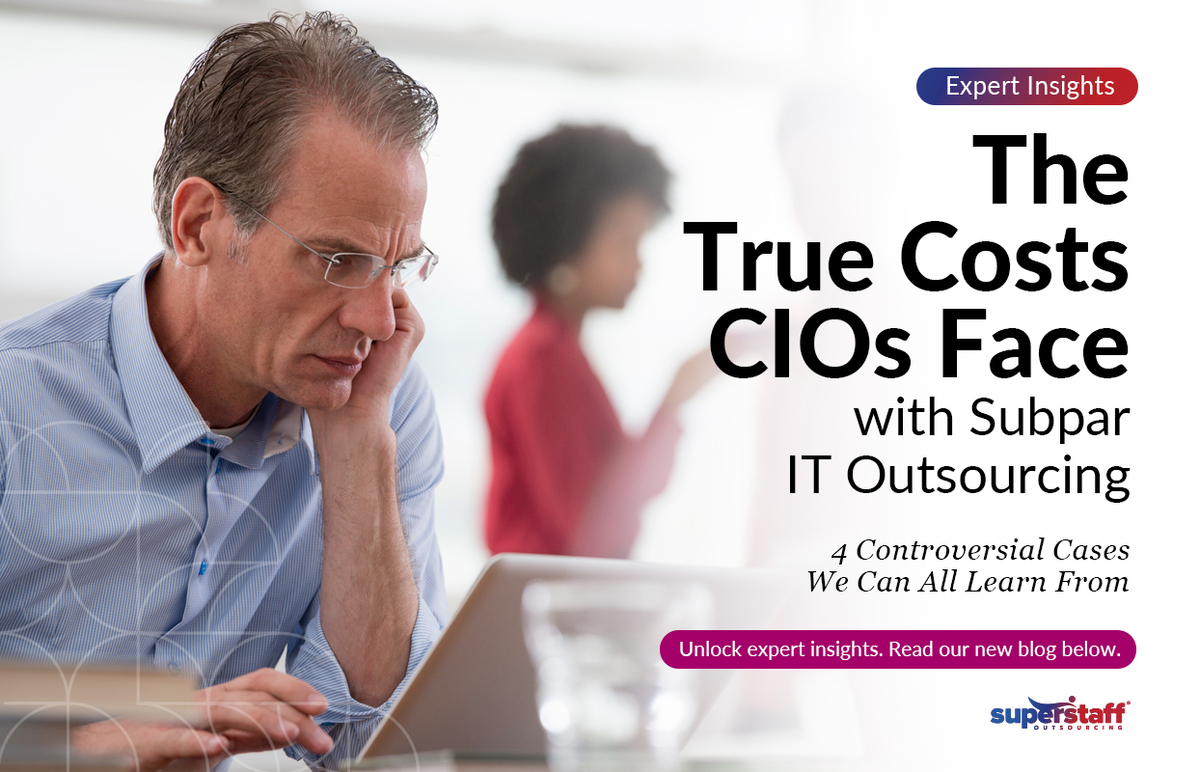
Business process outsourcing (BPO) has become integral to modern business operations, allowing companies to focus on their primary operations while delegating non-core tasks to specialized service providers. However, before a successful outsourcing partnership can happen, providers and clients must establish a fair pricing model.
Understanding BPO pricing models is crucial when you’re beginning your outsourcing partnership. Each pricing structure type, from transaction-based to full-time equivalent (FTE), provides varying outsourcing options, service quality levels, and cost-effectiveness.
Defining a Fair Pricing Model
A fair pricing model in outsourcing involves a transparent and mutually beneficial cost structure that aligns the client and service providers’ interests. It seeks to ensure that the client pays a reasonable fee for the services rendered while the BPO provider earns a profit that covers operational costs and allows for a growth margin.
The pricing structure that best fits your business depends on several factors, and your BPO partner will work with you to develop a strategy that will meet your specific goals and expectations.
Components of a Fair Pricing Model for BPO Services

1. Service Scope and Service Level Agreements
As you start to build your outsourcing team, you must negotiate the specific terms of your agreement with your BPO provider. Doing so helps set the stage for your partnership and allows you to comprehend better how a fair price is set for the services rendered.
An outsourcing contract should have clearly defined services and deliverables, specific performance metrics, and quality standards. Before you sign anything, you must ensure that you and your BPO provider understand and agree on the scope and conditions of your outsourcing partnership – and this is done through an SLA.
Service level agreements (SLA) are contracts between a service provider and its clients, documenting what services the provider will offer and defining the service standards the provider is expected to meet. SLAs set the expectations for a service provider’s performance and establish penalties for missing the targets and, in some cases, bonuses.
2. Cost Structures
Another factor considered for a fair base pricing model is the cost structure. A BPO contract should have a transparent breakdown of costs, including labor, technology, and overhead. A detailed cost allocation outline allows businesses to understand better where their money is going and helps them avoid hidden fees and unexpected charges.
The various costs involved in outsourcing operations typically include:
- Labor Costs: Includes recruitment, onboarding, training, wages, and benefits
- Technology and Infrastructure: Covers facilities, equipment, tools, software, and telecommunications costs
- Management Costs: Pays for the cost of operational management and quality assurance
- Outsourcing Service Costs: Involves a breakdown of costs for specific BPO services rendered
- Miscellaneous Fees: Contains extra costs, such as system update and maintenance fees, data storage and security, and contract termination charges
In addition to the above considerations, location may be another element that shapes cost structures. For example, the cost of hiring a nearshore team in Colombia may differ from an offshore location in the Philippines.
3. Pricing and Payment Terms
One of the most crucial outsourcing best practices is paying close attention to pricing and payment terms. These are among the most critical negotiating points for any contract, laying out when and how you’ll make a BPO transaction.
The pricing and payment terms of your contract must specify:
- Amount Payable: How much are you paying for the BPO services rendered?
- Mode of Payment: Which of the available payment methods will you use?
- Pricing Model: Would you prefer paying per hour, per transaction, or based on time and resources spent?
Let’s break down the different pricing models one by one to understand their advantages and disadvantages better.
Hourly-Based Model
Known to be the most straightforward pricing model, the hourly-based structure allows providers to receive a flat rate, no matter how much or how little work is done during the workday. The amount clients pay is calculated based on the average value of one hour of work completed by team members.
This fixed pricing model is the most common price structure offered by call centers because it helps support agents prioritize the customer experience instead of focusing on quantity to the detriment of quality. It is a win-win for businesses and BPO providers because it is easy to budget and improves service quality.
Transaction-Based Model
The transaction-based model can be a more cost-effective strategy for industries with fluctuating customer demand. Instead of paying BPO providers based on hours worked, companies will pay them either per transaction or after specific outcomes.
For example, businesses may hire a BPO company to handle data entry and pay based on completed tasks. Many clients who prefer this pricing model often have high fluctuations in workload, scaling up operations only during busy seasons.
FTE-Based Model
Full-time equivalent (FTE) is a pricing model that calculates the time and resources required to complete a particular project and uses these as the basis for the final price. Depending on the client’s needs and goals, the FTE-based model may use a mix of both part-time and full-time employees, giving them enough flexibility to scale up or down according to the project scope.
This pricing model is often used for specialized and niche functions like software development or AI and machine learning initiatives. Other factors considered for the FTE-based model include the project’s complexity, the workers’ expertise, and the number of staff members needed.
4. Risk-Sharing Mechanisms
Every successful partnership involves a fair and balanced shared risk and reward system. With the right outsourcing provider, you can develop a BPO contract that addresses and minimizes the risks while maximizing the rewards.
Here are a few examples of risks that clients and service providers must negotiate and iron out for a seamless outsourcing relationship:
- Data and Cybersecurity Breaches: With 5.5 billion malware attacks recorded across the globe in 2022, businesses must ensure that they have stipulations in their outsourcing contract that account for data breaches. BPO providers must make a concerted effort to communicate and implement strict cybersecurity protocols and guidelines to their employees, helping protect the client’s valuable and confidential data.
- Regulatory Compliance Requirements: Companies often have specific regulations and requirements depending on the nature of their business, industry, or state and federal laws. As such, they must communicate these with their outsourcing partners, ensuring proper alignment and enforcement of the rules.
- Communication Expectations: To ensure a smooth partnership, there must be constant communication between a business and its outsourcing provider. How frequently you expect to meet with or request updates from your BPO partner and your preferred communication methods should be discussed during the initial negotiations.
- Potential Disruptions: Companies and their BPO providers must also have agreements about monitoring potential disruptions and make plans for how to deal with them. For instance, what stipulations are put in place if the BPO company faces a natural disaster, geopolitical instability, or other circumstances that may affect the outsourced operations?
Since companies and BPO providers share risks and responsibilities, it’s only fair for them to share rewards. To encourage outsourced workers to do their best work, businesses can set key performance indicators (KPIs) and provide incentives for achieving targets and exceeding performance benchmarks.
5. Provisions for Flexibility and Adaptability
One of the most significant advantages of working with a BPO provider is the greater flexibility and scalability. To make the most of their outsourcing agreement, businesses must include provisions that account for service scope or volume adjustments.
Ideally, pricing models must have mechanisms for handling unforeseen changes in requirements and detailing how the cost and payment terms adapt to fluctuations in workload.
Top 5 Benefits of Fair BPO Pricing for Both Clients and Providers
Choosing the proper pricing structure helps ensure that the outsourcing solutions provided by the BPO partner align with the company’s objectives. A fair pricing model can help build trust, ensure cost efficiency, align interests, optimize performance, and promote scalability and growth.
Here’s a more detailed breakdown of the advantages of fair pricing models for both businesses and BPO providers:
Establish Transparency and Build Trust
Transparency and trust are crucial for maintaining a seamless working relationship. After all, business partners who trust each other will spend less time and energy worrying about being exploited and instead work hard to meet their partner’s needs and expectations.
A fair base pricing model builds trust between the client and the service provider and fosters a more transparent working relationship. With the detailed agreement and pricing structures, clients clearly understand where their money is going and whether their provider meets their agreed-upon goals.
Ensure Cost-Efficiency
One of the top reasons many businesses outsource is to minimize costs. However, how will you know you’re reducing expenses without a detailed breakdown and a fair pricing model?
With the right BPO partner, companies can ensure they receive the most value for their money and eliminate hidden costs. A BPO contract with comprehensive pricing and payment terms allows all parties to agree on costs and avoid unexpected overruns.
Encourage Alignment of Interests
Every successful partnership involves one thing: being able to work toward a common goal. For this to happen, both parties must align their expectations, understand each other’s roles and responsibilities, communicate often, and be transparent.
A fair pricing model minimizes conflicts of interest by ensuring both parties understand service costs and agree on its value. Ideally, systems will also be in place to reward high service quality and consistency in delivering results.
Optimize Performance
BPO pricing models exist to provide businesses with a clear breakdown of service costs, motivate service providers to consistently meet or exceed SLAs, and promote continuous improvement and innovation.
Imagine that you’re outsourcing customer service to an offshore call center, and you opt for an hourly-based pricing model. Since pay is not dependent on the number of calls, customer support agents can focus on meeting (or even surpassing) quality standards instead, ensuring your buyers receive the dedicated service they deserve.
At the same time, setting metrics and designing an ROI model for customer experience allows you to determine whether your CX efforts are effective and help you provide incentives for top performers, encouraging them to optimize their performance.
Promote Scalability and Growth
Finally, another significant advantage of fair BPO pricing models is promoting greater operational scalability and business growth. Companies can expand their capabilities and workforce through outsourcing solutions without significantly disrupting their operations.
A BPO contract and pricing model provides a framework for scaling services as the client’s business expands, allowing for long-term planning and strategic partnerships. Since the agreement clearly outlines how costs are calculated, there will be no surprises or hidden expenses once a company upgrades its outsourced team.
Striking a Balance: The Art of Establishing Fair BPO Pricing Models
A fair pricing model is the cornerstone of a successful long-term BPO relationship. It ensures that the client and the service provider’s objectives are aligned, fostering a collaborative and productive partnership.
At SuperStaff, we provide comprehensive and scalable outsourcing solutions, establishing fair pricing structures for our clients. Partnering with us ensures transparency and consistency in every aspect of your outsourcing operations.
By defining clear expectations, transparent cost structures, and performance metrics, your business can unlock the full potential of BPO services, leading to enhanced efficiency and growth. Remember: the key lies in open communication, flexibility, and a commitment to mutual success.
Contact us today and get started on your outsourcing journey!






